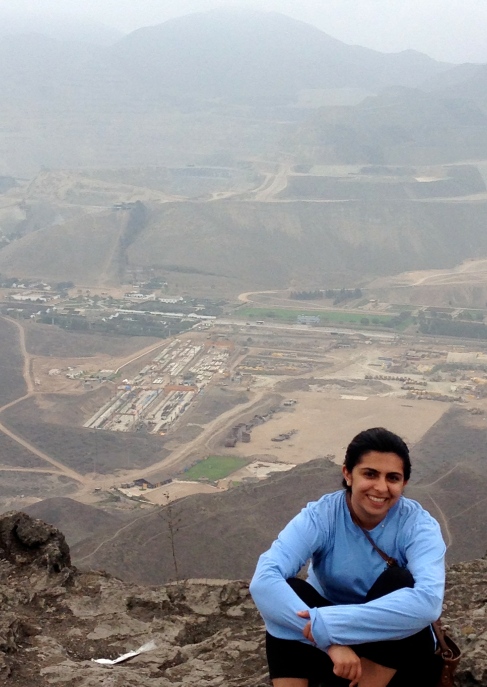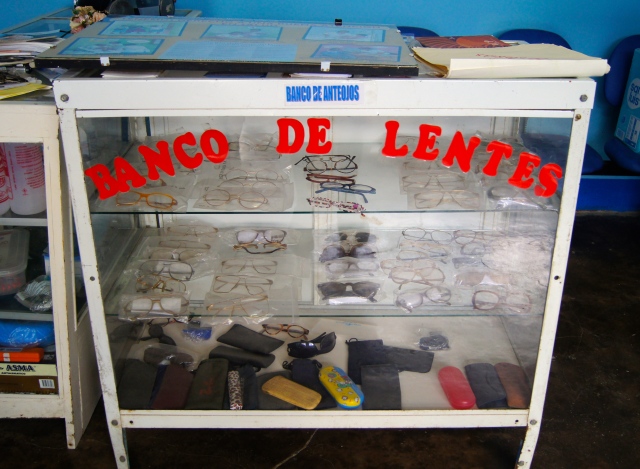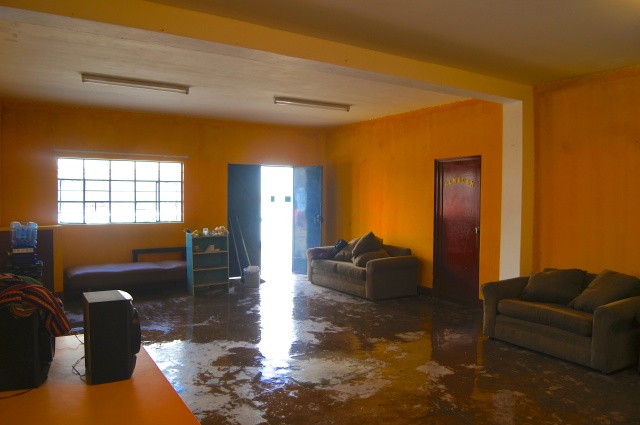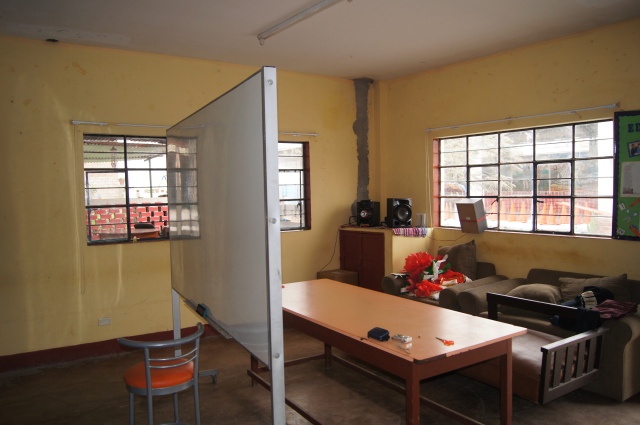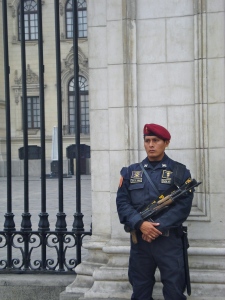 A kind doctor who grew up in La Tablada (the neighborhood where Dios Es Amor is located) came last weekend to offer free medical care for members of the community who needed glasses. In total, over a dozen members of the community were given glasses.
A kind doctor who grew up in La Tablada (the neighborhood where Dios Es Amor is located) came last weekend to offer free medical care for members of the community who needed glasses. In total, over a dozen members of the community were given glasses.
Painting Project Before and After
With the paining project finished, take a look at the difference between how the dining room looks before painting and after. After it is much brighter, vibrant, and inviting to the children and members of the community and staff that will come to eat in Dios Es Amor.
Painting Project
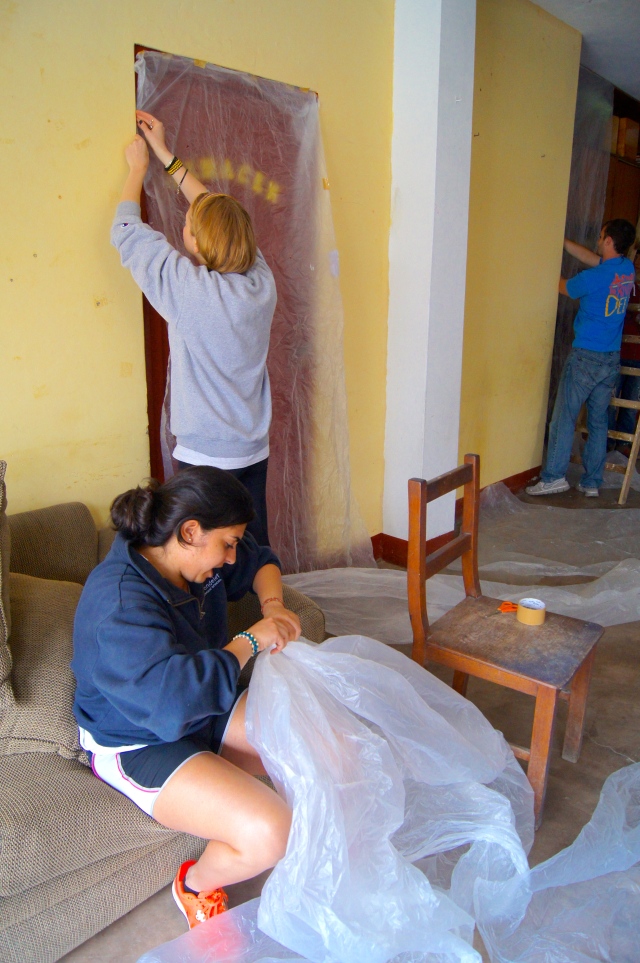
GROW interns Brony Long and Anum Lalani helping to cover things that didn’t need painting with plastic.
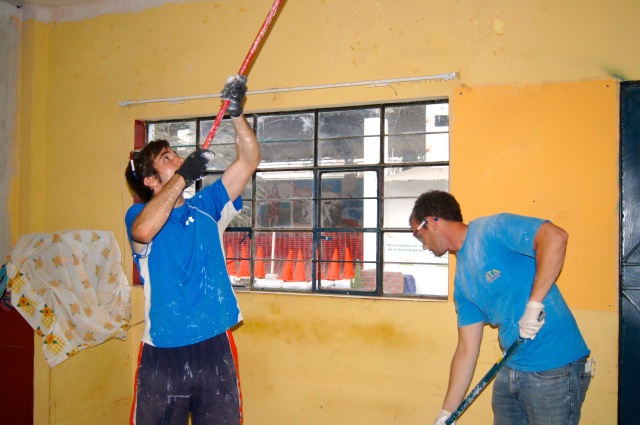
The first week on GROW all interns helped out in a large painting project. In the photo above, GROW Interns John Foley and Joey Starnes painting the dining room at our project site, Dios Es Amor. This project involved a lot of work, including sanding the walls and ceilings of the room before painting, brushing off the dust, smoothing over the walls with a spatula, then applying a two coats of white paint to the ceiling, two coats of a bright yellow coat to the walls, and two coats of red to the trim along the floor. The end product turned out beautifully, and transformed the dining room into a much more vibrant, bright, and cheerful room where children and staff members of Dios Es Amor will be able to eat and drink coffee for many years to come. The project took more than two full days of work, and involved a lot of patience, precision, and dedication in order to minimize paint spills and later cleanup work. Luckily a boombox was available to pump out Raggaeton and Latin music as we worked, helping to motivate us and made the experience a lot more fun. The next blog post will feature a photo of the finished dining room. Stay tuned!
Día Mundial del Medio Ambiente
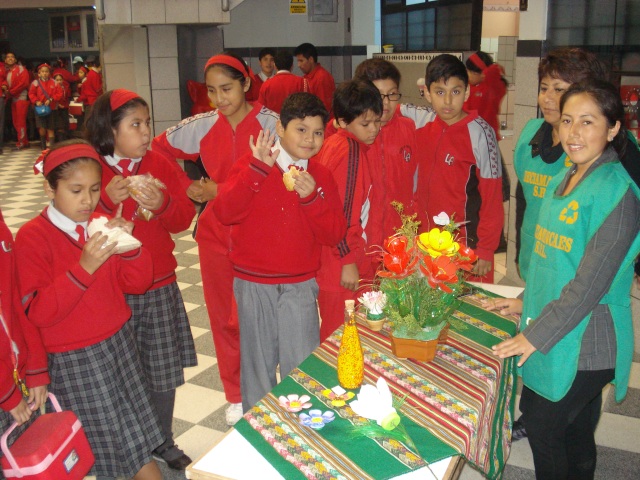 I certainly didn’t know this, but apparently June 5th is world environment day! To celebrate, Dios es Amor hosted campaigns at several local schools. Kids were able to bring in recycling they had collected from their houses, and then representatives from Dios es Amor talked about how these things could be reused.
I certainly didn’t know this, but apparently June 5th is world environment day! To celebrate, Dios es Amor hosted campaigns at several local schools. Kids were able to bring in recycling they had collected from their houses, and then representatives from Dios es Amor talked about how these things could be reused.
English Lesson
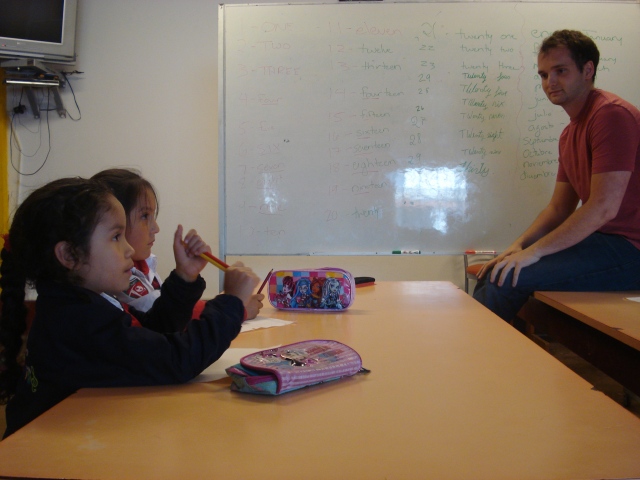
One of the many programs that Dios es Amor runs is after-school tutoring for kids from La Tablada. The GROW interns have been able to help by bringing a native speaker’s perspective to English lessons.
Service Learning
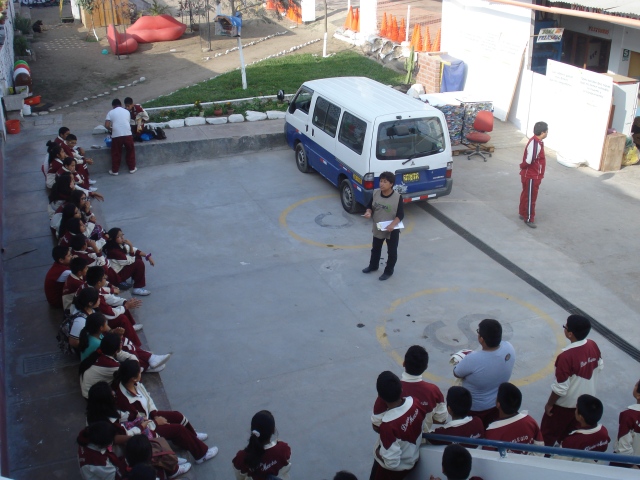
A group of third graders from a local elementary school came to volunteer at Dios es Amor. They were a big help in cleaning up the project site and learned about giving back at the same time.
Life Out of Plastic (LOOP) Visit
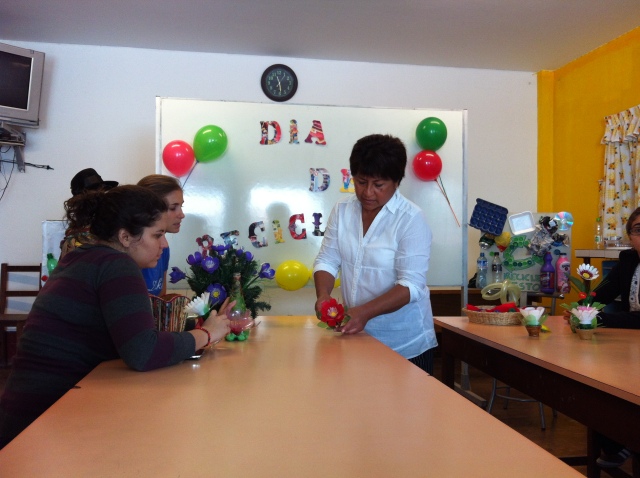
LOOP, a partner of Dios Es Amor, aims to take action against pollution by recycling plastic material into bags and clothing. LOOP stopped by today to learn a little more about what Dios Es Amor is all about, as well as present about their own company and mission.
Remembering the Past
For me, it’s impossible to truly enter into solidarity with an organization without first attempting to understand their history. I’ve always had a fairly good understanding of how Dios es Amor formed as an organization, but we rarely talk in our chapter about Peruvian history as a whole. Even here in Peru, there are certain topics that remain somewhat taboo. First among these is the role of guerilla groups like the Shining Path in recent Peruvian history.
Led by professor and communist ideologue Abimael Guzmán, the Shining Path began an armed guerrilla effort to overthrow the government in 1980. The movement gained power quickly in rural Peru by promising economic equality and emphasizing the huge disparities between the urban wealthy and rural poor. They continued to add members and territory until the eventual capture of Guzmán in 1992.
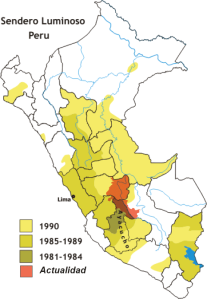
Map showing territory under control of the shining path over time. As of 1990, a significant portion of the country was under its influence (Wikipedia).
The conflict between government forces and revolutionaries saw terrible massacres by both sides. Innocent rural citizens were often confused with Shining Path members, and hundreds were sentenced to death by faceless military tribunals. Today the movement has largely deteriorated into a drug trafficking organization with vague political goals. They have tried several times to become a legally recognized political party, but these efforts have been denied by the government.
This post may seem somewhat random, but I recently went to an exhibition remembering those who lost their lives during the conflict. I had the privilege of going with Ignacio, one of the men who works at Dios es Amor. Ignacio was able to share personal stories about many of the tragedies and how they affected Dios es Amor. During the height of the violence, Dios es Amor still served as a home for young boys. There were days when armed conflicts in the streets prevented them from going outside and when bombs could be heard in the distance.
The effects of this movement are still evident today. Superficially, Peru still appears to be much more of a military state than Americans are used to. Policemen, especially those close to important government buildings, are often heavily armed.
More importantly, much of the poverty in Lima can be traced to this time period. As the Shining Path gained power in rural areas, many villagers were forced to flee to larger cities for safety. The city of Lima wasn’t prepared to deal with this influx, and many people simply built small houses where they found space. These informal neighborhoods still exist to this day, and many still lack basic infrastructure like electricity and running water.
La Tablada, where Dios es Amor is located, is on the outskirts of Lima where many of these people settled. The profound poverty caused by this is still very present, and many of those who benefit from Dios es Amor’s projects came to Lima during this time. Compounding the problem is the fact that many rural citizens only speak Spanish as a second language. Their native language is Quechua, the primary language from the pre-colonization period.
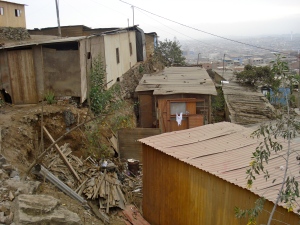
Several houses from the hill near Dios es Amor. Temporary houses like this were created to accommodate people forced to the city by violence in outlying areas.
While we always want to run to poverty and help, it is also necessary to take a moment to understand the underlying causes.
— Joey
Brony Long
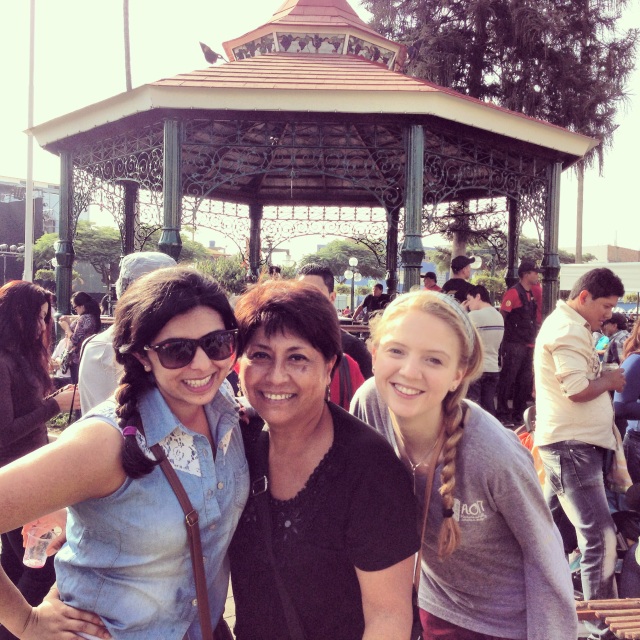
My name is Brony and I am a rising senior at Vanderbilt studying molecular and cellular biology. I have never been to South America before, but am really excited to learn more about Peruvian culture and maybe even pick up some Spanish. So far I’ve enjoyed exploring many of Lima’s beautiful parks like Parque de la Amistad. Despite the language barrier, I already feel like I have met so many amazing people in Peru. Whether it is playing with the kids at Dios Es Amor or learning to dance with Mili, I have found that I am always connecting with community members. GROW has already been an amazing experience and I am so excited for the weeks to come!
Hey there! My name is Anum Lalani and
Hey there! My name is Anum Lalani and I am one of the GROW members from GlobeMed at Vanderbilt working alongside Joey, John, and Brony at Dios Es Amor. I am from Miami, Florida and am a rising senior at Vanderbilt University. I am double majoring in Cellular and Molecular Biology and Spanish. During my free time I like to go running, play flag football, listen to music and cook. This is my first time in South America and I am so excited to be working with our partner, Dios Es Amor, in Lima, Peru! When I first arrived into the city it was a bit of a culture shock. Although I have been actively take Spanish classes, I definitely realized there is still a lot I don’t know. But my spanish can only get better from here right? I am even more excited to try all the different fruits here. I love to eat fruit. I just found out that there are pink bananas here and I am very curious to find out what they taste like. Although learning about the language and culture will be an important and exciting part of the trip, my main focus here is learning from and forming a strong relationship with our partner. I am looking forward to getting to know more about the staff and the community they help out. 